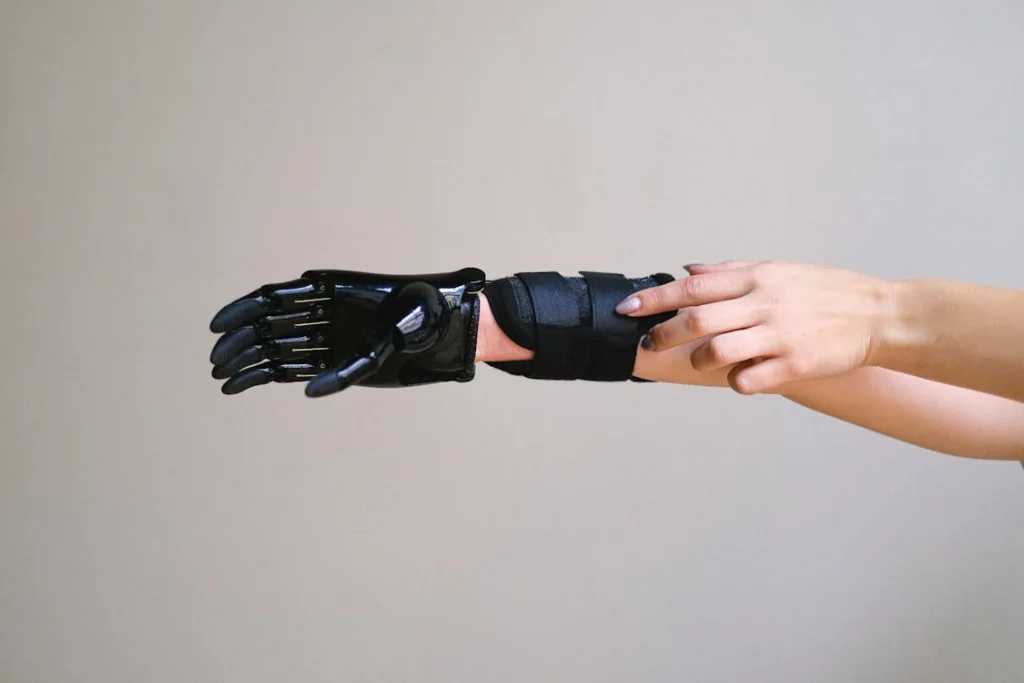Bionic limbs have transformed the way people with limb loss experience the world. These advanced prosthetics use smart technology to mimic natural movement, allowing users to grip objects, walk with stability, and even perform fine motor tasks. But unlike traditional mechanical prosthetics, bionic limbs rely on electrical power to function. This raises an important question—do they need charging?
The simple answer is yes. Most modern bionic prosthetics are powered by rechargeable batteries, similar to those found in smartphones or electric cars. But just like any electronic device, their battery life depends on several factors, including how often they are used, the type of movements performed, and the overall design of the prosthetic.
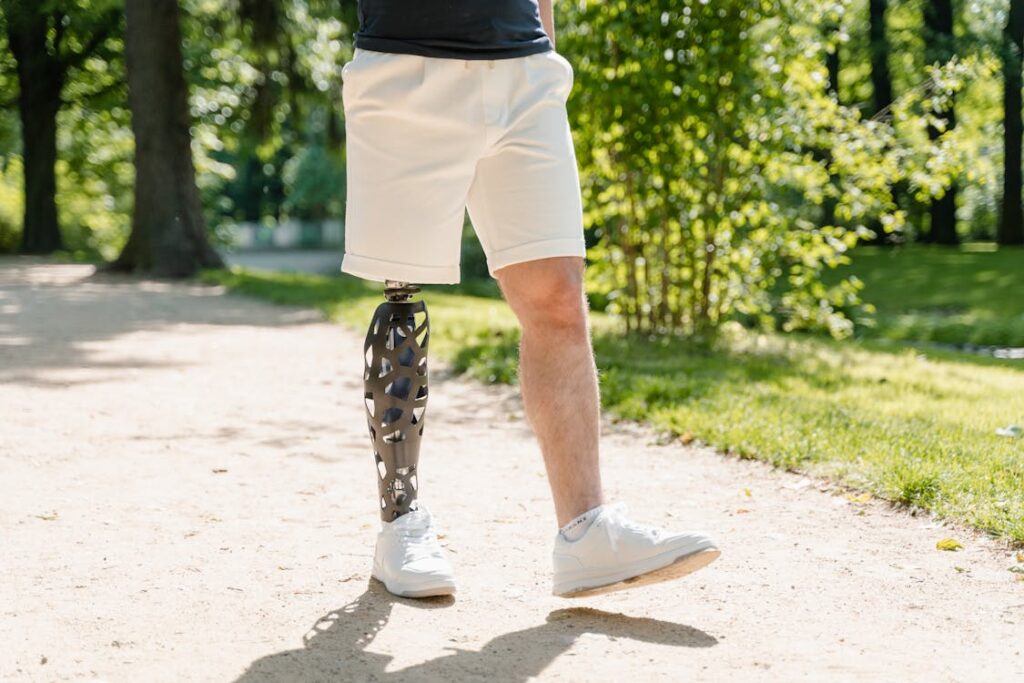
How Bionic Limbs Are Powered
Bionic limbs use advanced electronic components to replicate natural movement, and these components require a reliable power source to function.
Unlike traditional prosthetics, which rely on purely mechanical systems, bionic limbs use motors, sensors, and microprocessors to provide a more intuitive and responsive experience.
The Role of Batteries in Bionic Limbs
The heart of any bionic prosthetic is its battery. Most modern bionic limbs are powered by rechargeable lithium-ion batteries—the same type used in smartphones, laptops, and electric vehicles.
These batteries are lightweight, energy-dense, and capable of holding a charge for extended periods, making them ideal for prosthetic applications.
The battery supplies power to all the key components of the prosthetic, including small electric motors that move the fingers or joints, sensors that detect muscle signals, and microprocessors that translate those signals into movement.
Without a charged battery, the prosthetic cannot function, which is why battery management is crucial for users who rely on their bionic limbs daily.
How Long Does a Battery Last on a Single Charge?
Battery life varies depending on the type of bionic limb, the level of activity, and the specific movements performed. In general, a full charge can last anywhere from 8 to 24 hours, though some advanced models may last even longer.
Users who engage in frequent, high-intensity activities—such as lifting objects, typing, or using fine motor controls—may experience faster battery drainage.
On the other hand, those who use their prosthetic for light, occasional tasks may find that their battery lasts all day without needing a recharge.
The battery’s capacity also depends on the specific model of the prosthetic. Some bionic hands or legs come with high-capacity batteries designed for extended use, while others prioritize lightweight design, resulting in shorter battery life.
Understanding these differences can help users plan their charging routine effectively.
Charging a Bionic Limb: What to Expect
Most bionic limbs come with a dedicated charging system, which can include a plug-in charger, a docking station, or a wireless charging pad. Charging times vary, but most prosthetic batteries take between 1 to 4 hours to fully recharge.
Many users prefer to charge their prosthetic overnight so that it’s ready for use in the morning. Others carry a spare battery or portable charger to ensure they have power throughout the day.
Some newer prosthetic models even support fast charging, allowing users to top up their battery in a short amount of time.
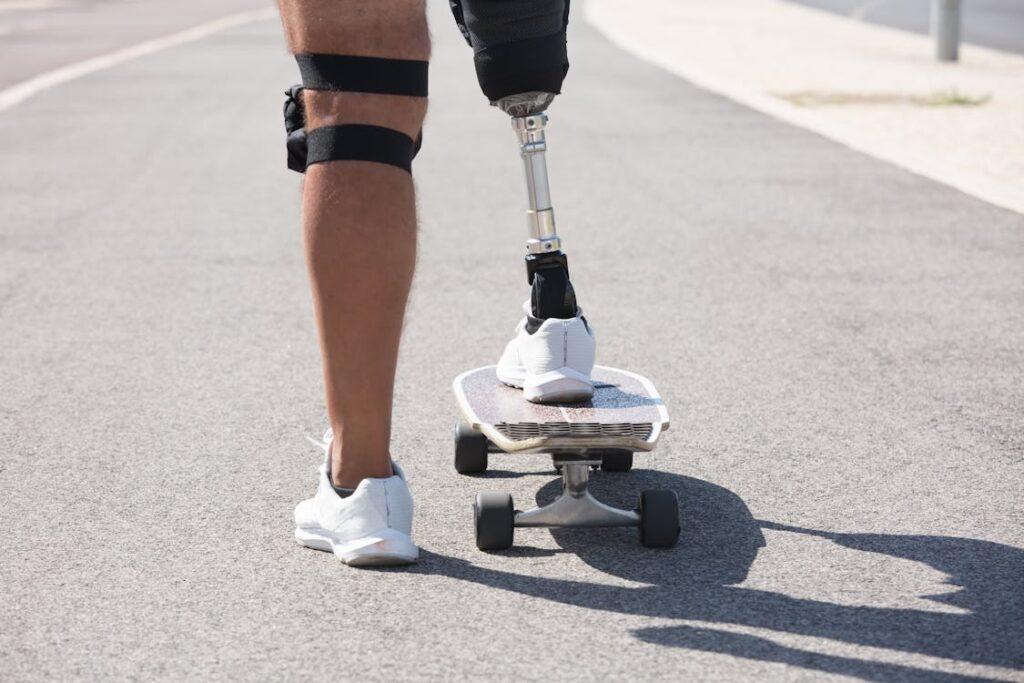
Factors That Affect Battery Life in Bionic Limbs
Battery life is one of the most important aspects of a bionic limb. A prosthetic that runs out of power too quickly can be inconvenient and limit the user’s ability to carry out daily tasks.
While most modern bionic limbs are designed to last a full day on a single charge, several factors can influence how long a battery actually lasts. Understanding these factors can help users maximize battery performance and avoid unexpected power issues.
Frequency and Type of Use
The more a bionic limb is used, the faster its battery drains. A person who wears their prosthetic for long hours every day will naturally experience shorter battery life compared to someone who only uses it occasionally.
The types of movements performed also make a difference. Simple tasks like holding a cup or resting a hand on a surface use less power than continuous gripping, typing, or lifting objects.
Similarly, a bionic leg that supports walking throughout the day will consume more energy than one used only for short periods.
Some prosthetic limbs have energy-saving features that reduce power consumption when the limb is at rest. These features help conserve battery life, especially for users who do not require constant movement.
However, frequent and complex motions, especially those involving fine motor skills or high resistance, will naturally drain the battery faster.
Environmental Conditions
Temperature and humidity can also affect battery performance. Lithium-ion batteries, which are commonly used in bionic limbs, perform best at moderate temperatures.
Extreme cold can cause the battery to lose charge more quickly, while excessive heat can degrade the battery over time. Users who live in very hot or cold climates may notice differences in battery life depending on the season.
Sweat and moisture can also impact battery efficiency. While most modern bionic limbs are designed to be resistant to minor exposure to sweat, excessive moisture can interfere with battery performance and cause electrical issues.
Ensuring that the prosthetic remains dry and free from excessive humidity can help maintain optimal battery function.
Age and Condition of the Battery
Like all rechargeable batteries, the ones used in bionic limbs degrade over time. After several hundred charge cycles, the battery may not hold as much power as it did when it was new.
This is a natural process that occurs with all lithium-ion batteries, whether in a smartphone, laptop, or prosthetic limb.
Most prosthetic manufacturers recommend replacing the battery after a few years to ensure continued reliability.
If a user starts noticing a significant drop in battery life or if the prosthetic needs to be charged more frequently than before, it could be a sign that the battery is wearing out.
In such cases, seeking a replacement battery or professional servicing is the best option to restore optimal performance.
Software and Power Management Features
The software inside a bionic limb plays an important role in power management. Some advanced prosthetics include smart energy-saving modes that automatically adjust power usage based on activity levels.
These features help prolong battery life by reducing energy consumption when the limb is idle or performing low-power movements.
Firmware updates provided by the manufacturer can also improve battery efficiency.
Many prosthetic companies release software improvements over time to optimize battery performance and enhance overall functionality. Keeping the device updated ensures that it benefits from the latest power-saving advancements.
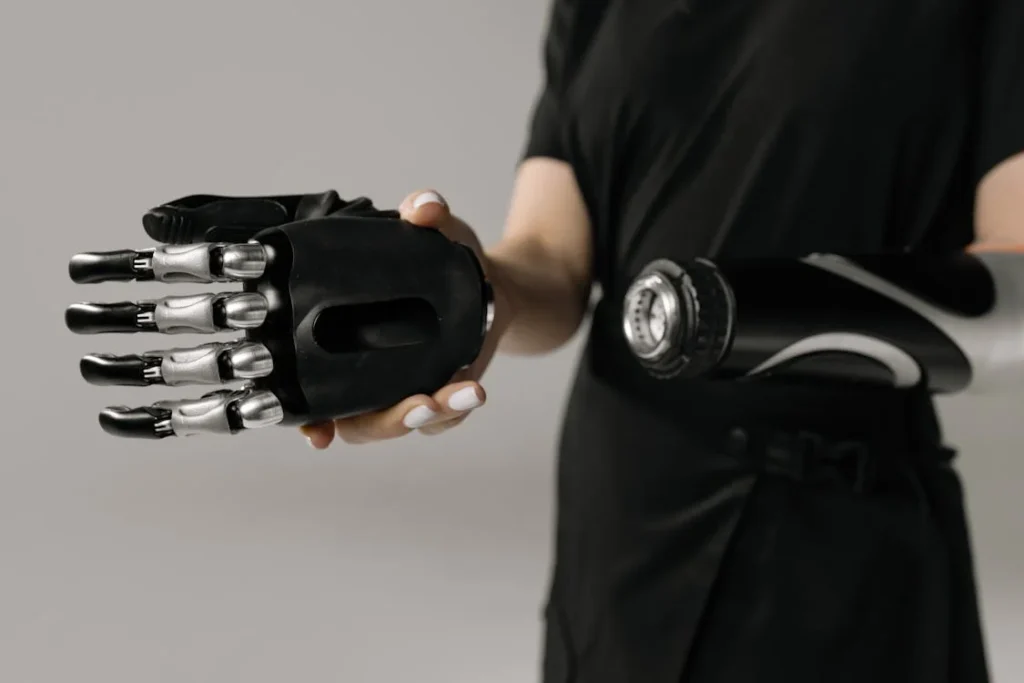
How to Maximize Battery Life in a Bionic Limb
For users who rely on their bionic limb every day, maximizing battery life is essential. While battery performance naturally degrades over time, proper care and usage habits can extend its lifespan and ensure the prosthetic functions efficiently throughout the day.
Simple adjustments to daily routines, charging habits, and maintenance can make a significant difference in how long a charge lasts and how well the battery holds up over the years.
Developing a Smart Charging Routine
One of the most effective ways to keep a bionic limb’s battery performing well is to follow a consistent charging routine. Many users prefer to charge their prosthetic overnight, ensuring it has full power by morning.
However, it is important to avoid leaving the battery plugged in for too long, as overcharging can reduce its lifespan over time.
Most modern prosthetic batteries have built-in protection against overcharging, but unplugging the device once it is fully charged helps maintain battery health.
Charging before the battery is completely drained is also a good practice. Lithium-ion batteries, which are commonly used in bionic limbs, perform best when they are kept within a charge range of about 20% to 80%. Letting the battery reach 0% too often can shorten its lifespan.
If possible, users should aim to recharge their prosthetic before it fully runs out of power.
Proper Handling and Storage for Battery Health
How a battery is stored and handled when not in use also affects its long-term performance. If a prosthetic limb will not be used for an extended period, it should be stored with a partial charge rather than fully drained.
Keeping a battery at around 50% charge during long-term storage helps prevent capacity loss.
Extreme temperatures can also impact battery performance. It is best to avoid exposing a prosthetic limb to direct sunlight, excessive heat, or freezing temperatures for prolonged periods.
Leaving the prosthetic in a hot car or using it in very cold weather without proper precautions can lead to faster battery drain and potential damage over time.
Reducing Unnecessary Power Consumption
Many bionic prosthetics come with settings that allow users to adjust power usage. For instance, some models have energy-saving modes that reduce power consumption when the prosthetic is idle.
Using these settings whenever possible can help extend battery life, especially for users who do not require constant movement throughout the day.
Another way to conserve battery life is to minimize unnecessary or excessive movements. While bionic limbs are designed for durability, frequently performing high-energy actions like strong gripping, repeated squeezing, or rapid flexing can drain the battery faster.
Being mindful of movement intensity can help users get more use out of each charge.
Keeping the Battery and Prosthetic Clean
Dirt, sweat, and dust can interfere with a prosthetic’s electrical components, including the battery connections.
Regularly cleaning the prosthetic, especially around the charging port and battery compartment, ensures that power transfers efficiently during charging. If dirt or debris accumulates, it can prevent proper charging and lead to battery issues.
For users who sweat heavily, especially those living in hot or humid climates, keeping the prosthetic dry is crucial.
Excess moisture can seep into sensitive areas and affect battery function. Some prosthetic users wear a protective sleeve or liner to reduce exposure to sweat and improve overall comfort.
Monitoring Battery Performance Over Time
Over months and years of use, it is normal for a battery to lose some of its original capacity. However, if a prosthetic suddenly starts losing charge much faster than before, it may be a sign of a deeper issue.
Regularly monitoring battery performance can help users spot early signs of wear.
Most modern prosthetic limbs provide battery level indicators, allowing users to track charge status throughout the day.
If a prosthetic starts requiring more frequent charging than usual, or if it shuts down unexpectedly despite showing a charge, it may be time for professional servicing or a battery replacement.
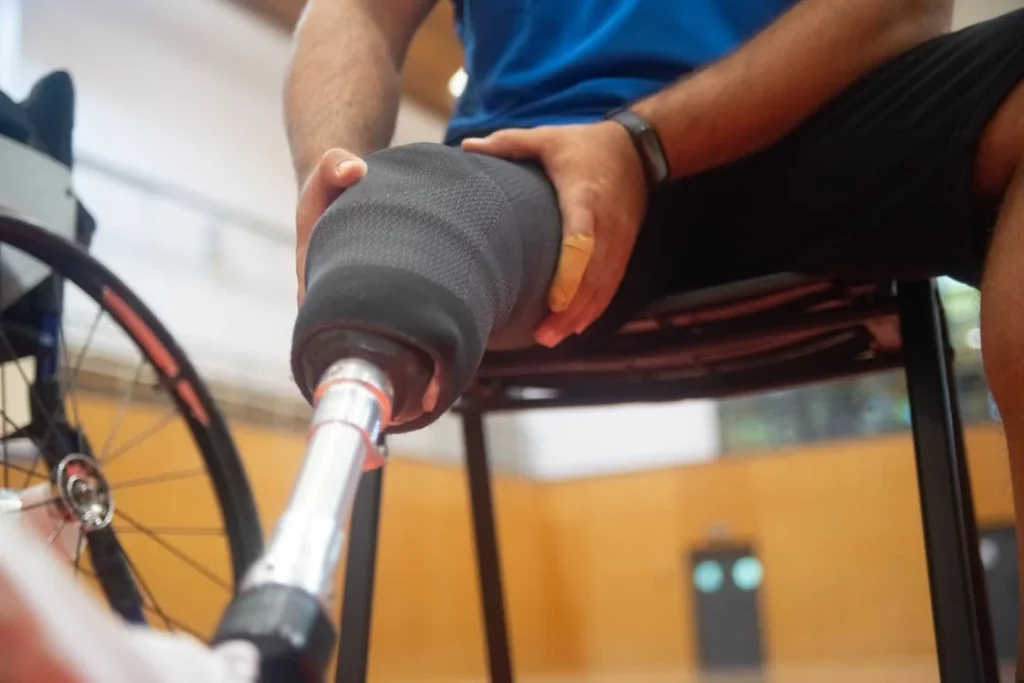
Common Power Issues and How to Fix Them
Even with proper care, bionic prosthetic limbs can sometimes experience power-related issues. A sudden loss of charge, failure to turn on, or shorter-than-usual battery life can be frustrating, especially for users who rely on their prosthetic every day.
Fortunately, many of these issues have simple solutions. Understanding the common causes of power problems and how to troubleshoot them can help users get their prosthetic working again quickly.
The Prosthetic Won’t Turn On
If a bionic limb does not turn on, the first thing to check is whether the battery is fully charged. Sometimes, the battery may have drained completely without the user realizing it.
Plugging the prosthetic into its charger and allowing it to charge for at least 30 minutes before attempting to turn it on can resolve the issue.
In some cases, the problem may be related to a faulty connection. If the battery is not seating properly in its compartment or if the charging cable is loose, the prosthetic may not receive power.
Removing the battery, cleaning the contact points, and reinserting it securely can sometimes fix the issue. If the prosthetic still does not power on after a full charge, the battery may need to be replaced, or there could be a deeper electronic fault that requires professional servicing.
The Battery Drains Too Quickly
A bionic limb that suddenly starts losing charge faster than usual may have an aging battery. Like all rechargeable batteries, the ones used in prosthetic limbs degrade over time.
If a prosthetic that once lasted all day now only works for a few hours, the battery may be nearing the end of its lifespan. Replacing the battery can restore normal performance.
Sometimes, excessive battery drain is caused by software issues. If the prosthetic has received a firmware update or is running outdated software, it may not be managing power as efficiently as before.
Checking with the manufacturer for any available updates or recalibrating the device can sometimes resolve battery drain issues.
The Prosthetic Shuts Down Unexpectedly
If a prosthetic limb shuts down unexpectedly even when the battery appears to have a charge, there may be a problem with the battery connection.
Loose connections, dirt buildup, or damaged battery terminals can cause intermittent power loss. Cleaning the battery contacts and ensuring that the battery is fully seated can sometimes resolve this problem.
Another possible cause is overheating. If the battery or internal components become too hot, the prosthetic may automatically shut down as a safety measure.
This can happen if the prosthetic is used continuously for extended periods, especially in hot environments. Allowing the device to cool down before turning it back on can help prevent further shutdowns.
The Battery Won’t Charge
When a prosthetic battery does not charge, the issue could be with the charger, the charging port, or the battery itself. Trying a different charger or charging cable can help determine if the problem lies with the accessories rather than the prosthetic.
If the battery still does not charge, checking the charging port for dust or debris is a good next step. A dirty or clogged charging port can prevent the battery from receiving power.
Gently cleaning the port with a dry cloth or compressed air can sometimes restore charging functionality.
If none of these steps work, the battery itself may be damaged or worn out. In such cases, replacing the battery with a new one is the best solution. Users should always use manufacturer-approved batteries to ensure compatibility and safety.
When to Seek Professional Help
While many power issues can be resolved at home, some require expert attention. If a prosthetic limb continues to experience power failures, loses charge unusually fast, or will not turn on despite a fully charged battery, professional servicing may be necessary.
Prosthetic technicians can perform detailed diagnostics, replace damaged components, and update software to optimize battery performance. Regular check-ups can also help prevent major power failures by catching small issues before they become bigger problems.

The Future of Battery Technology in Bionic Limbs
As bionic prosthetic technology continues to evolve, battery performance is improving rapidly. The goal is to create prosthetic limbs that last longer on a single charge, charge faster, and require less frequent maintenance.
Researchers and manufacturers are actively working on new battery solutions that will make bionic limbs more reliable and convenient for users.
Advancements in Battery Efficiency
One of the biggest challenges in bionic limb technology is balancing power and weight. Larger batteries can hold more energy but add weight to the prosthetic, making it less comfortable for the user.
Recent advancements in battery efficiency are helping solve this problem. Newer lithium-ion batteries are being designed to store more energy in a smaller size, allowing for longer use without increasing weight.
Another promising development is the integration of solid-state batteries, which are more compact and durable than traditional lithium-ion batteries.
These batteries offer faster charging times, higher energy capacity, and a longer lifespan, reducing the need for frequent battery replacements.
Wireless and Fast Charging Solutions
Charging a bionic limb could become even more convenient in the near future.
Some manufacturers are working on wireless charging technology that would allow users to charge their prosthetic simply by placing it on a charging pad, similar to how modern smartphones charge wirelessly.
This would eliminate the need for cables and connectors, which can wear out over time.
Fast charging is another area of innovation. While current bionic limbs typically take a few hours to fully charge, newer battery technologies could cut this time significantly.
With ultra-fast charging solutions, users may be able to recharge their prosthetic in just 30 minutes, making it easier to power up on the go.
Energy Harvesting: Charging While in Use
One of the most exciting possibilities for the future of bionic limbs is energy harvesting technology. This would allow prosthetic limbs to generate their own power while being used.
Researchers are exploring ways to use movement, body heat, and even muscle activity to recharge the battery.
For example, walking with a bionic leg could create energy through a small internal generator, extending battery life without requiring frequent external charging.
This self-sustaining approach would reduce reliance on traditional charging methods and give users more freedom to move without worrying about running out of power.
AI-Driven Power Management
Artificial intelligence is playing a growing role in prosthetic technology. Future bionic limbs may come with AI-driven power management systems that optimize battery usage based on real-time activity.
These systems could analyze a user’s movement patterns and automatically adjust power consumption, ensuring that energy is used efficiently throughout the day.
For example, if a user is performing repetitive tasks that require high energy consumption, the AI system could redistribute power to extend battery life.
This smart energy optimization would allow prosthetic users to get the most out of their battery without constantly monitoring their charge levels.
Sustainable and Eco-Friendly Batteries
As the demand for bionic prosthetics grows, manufacturers are also looking for ways to make batteries more environmentally friendly. Traditional lithium-ion batteries contain materials that can be harmful to the environment if not disposed of properly.
Newer battery technologies, such as bio-based and recyclable batteries, are being developed to reduce waste and improve sustainability. These eco-friendly alternatives could help make bionic limbs not only more powerful but also more environmentally responsible.
The Future of Fully Self-Powered Prosthetics
While battery-powered bionic limbs are currently the standard, the long-term goal is to develop prosthetics that do not require external charging at all.
Researchers are exploring fuel cell technology, kinetic energy conversion, and advanced bioelectrics that could allow prosthetic limbs to function indefinitely without needing a traditional battery.
Although these technologies are still in the early stages, the idea of a fully self-powered prosthetic is becoming more realistic.
In the future, bionic limbs may be able to generate and store their own power through natural body movements, removing the need for users to worry about charging ever again.
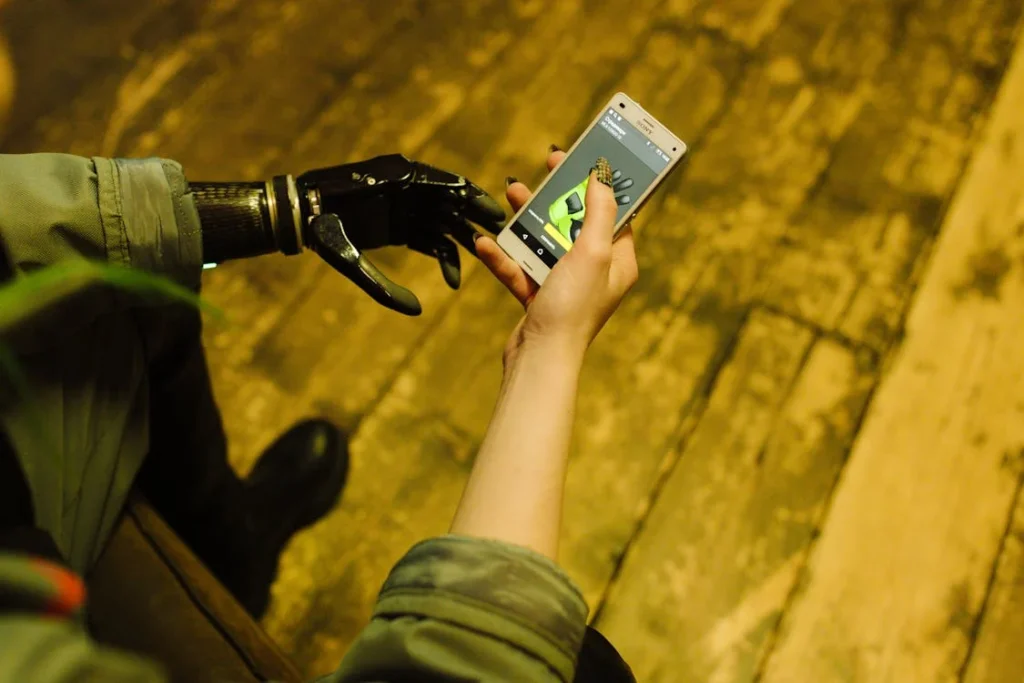
The Psychological Impact of Battery-Dependent Bionic Limbs
While much of the focus on bionic limbs revolves around their functionality, battery life, and maintenance, there is another aspect that often goes unnoticed—the psychological effect of relying on a powered prosthetic.
Unlike traditional mechanical limbs, bionic prosthetics introduce a new layer of dependence: the need for electricity. For some users, this can bring a mix of empowerment and anxiety, as their ability to perform daily tasks is now tied to battery levels and charging routines.
The Anxiety of Running Out of Power
One of the biggest psychological challenges faced by bionic limb users is “battery anxiety”—the constant concern about whether the prosthetic will have enough charge to last through the day.
Just as people worry about their smartphones running out of battery, users of bionic limbs may feel a sense of unease if their prosthetic’s power is low, especially if they are away from a charger.
This fear can be particularly stressful for individuals who rely on their bionic limb for essential daily activities, such as work, commuting, or social interactions.
The possibility of a prosthetic shutting down unexpectedly can lead to self-consciousness, frustration, or even avoidance of certain situations where they might not have access to charging facilities.
Developing a Routine for Control and Confidence
For many users, establishing a reliable charging routine helps reduce anxiety. Knowing that their prosthetic is fully charged before starting the day can provide a sense of security and confidence.
Some users even go as far as carrying backup batteries or portable chargers to ensure they are never caught off guard.
Planning activities around battery life can also help. For example, if a user knows that certain tasks drain the battery faster, they may choose to do them earlier in the day when the prosthetic is at full charge.
While this requires some adjustment, it gives users a greater sense of control over their daily experience.
The Emotional Connection to a Bionic Limb
Unlike traditional prosthetics, which are purely mechanical, bionic limbs feel more like an extension of the body because of their electronic responsiveness and ability to mimic natural movement.
Users often describe feeling deeply connected to their prosthetic, sometimes even giving it a name.
However, this connection can also make it more distressing when the prosthetic loses power. A mechanical prosthetic can still function when passive, but a powered bionic limb without charge is essentially non-functional.
This can be frustrating, especially for new users who are still adjusting to life with a bionic prosthetic.
Overcoming the Mental Barriers of a Powered Prosthetic
Building confidence with a bionic limb goes beyond just understanding its technical aspects—it also requires mental and emotional adaptation. Many users benefit from practicing power management strategies to ensure they never feel helpless due to battery failure.
For some, mindset shifts can make a difference. Rather than seeing a dead battery as a loss of function, users can reframe it as part of regular device maintenance, much like charging a phone or refueling a car.
Viewing the prosthetic as a tool rather than an extension of the body can also help reduce frustration when battery issues arise.
Support groups and communities of prosthetic users can be valuable in overcoming these psychological hurdles.
Sharing experiences with others who face similar challenges can provide encouragement, practical tips, and reassurance that battery dependence does not have to limit independence.

The Cost of Battery Maintenance and Replacements
Owning a bionic limb comes with long-term costs, and one of the ongoing expenses is battery maintenance and replacement.
While users often focus on the initial cost of a prosthetic, many do not realize that battery wear and degradation can lead to additional expenses over time. Understanding the financial aspect of battery maintenance helps users plan ahead and avoid unexpected costs.
How Often Do Bionic Prosthetic Batteries Need to Be Replaced?
Like any rechargeable battery, the ones used in bionic limbs degrade over time. Most lithium-ion batteries can handle 300 to 500 full charge cycles before their capacity starts to decline noticeably.
For a prosthetic user who charges their limb daily, this translates to about 2 to 3 years before a significant drop in performance occurs.
As the battery ages, it may still function, but the charge will not last as long. A user who once got 10 to 12 hours of battery life may find their prosthetic only lasting 5 to 6 hours after a few years. At this point, replacing the battery becomes necessary to restore full functionality.
The Cost of Battery Replacement
The price of a replacement battery varies depending on the model and manufacturer of the prosthetic limb. Basic battery replacements can cost anywhere from $100 to $500, while more advanced or high-capacity batteries can cost upwards of $1,000.
Some prosthetic brands offer extended warranties or service packages that cover battery replacements, but for those without coverage, the cost can add up over the lifetime of the prosthetic.
Users should also factor in labor costs if they need professional assistance for battery replacement. While some prosthetic batteries are designed for easy swapping, others require a technician to install them properly.
If the battery is built into the prosthetic, users may need to send the device to the manufacturer for servicing, leading to additional costs and potential downtime without their prosthetic.
How to Reduce Battery Replacement Costs
Taking proper care of a bionic limb’s battery can delay the need for replacement. Simple practices like avoiding deep discharges, keeping the prosthetic at moderate temperatures, and following a proper charging routine can help extend battery life.
Users who anticipate heavy use may also consider investing in an extra battery upfront. Some bionic prosthetics allow for swappable batteries, meaning users can carry a spare and replace it as needed.
While this comes with an initial cost, it can be a more affordable long-term solution compared to frequent battery replacements.
Insurance and Financial Assistance Options
For those concerned about the cost of battery replacements, insurance coverage or financial assistance programs may help. Some healthcare plans include coverage for prosthetic maintenance, including battery replacements.
Checking with insurance providers to see if batteries are covered under prosthetic care benefits can help users avoid out-of-pocket expenses.
There are also nonprofit organizations and government assistance programs that offer financial aid for prosthetic repairs and maintenance. Users who qualify may be able to get partial or full coverage for replacement batteries through these resources.
Planning ahead for battery-related expenses ensures that users do not face unexpected disruptions in their prosthetic use.
By understanding battery lifespan, costs, and maintenance strategies, users can make informed decisions that keep their bionic limbs functioning efficiently for years.
Conclusion
Bionic limbs have revolutionized mobility and independence for individuals with limb loss, but their reliance on battery power adds a new layer of responsibility. Understanding battery life, charging habits, and potential power issues is essential for maintaining a reliable and functional prosthetic. With proper care, most bionic limbs can last a full day on a single charge, and advancements in battery technology are making them even more efficient.
While batteries naturally degrade over time, following smart charging routines, monitoring usage, and seeking timely replacements can help extend their lifespan. Future innovations, such as wireless charging, energy harvesting, and AI-driven power management, promise to make bionic limbs even more convenient and sustainable.
At Robobionics, we are committed to providing high-quality prosthetic solutions that blend advanced technology with long-lasting performance. If you’re considering a bionic limb or need expert guidance on maintenance, book a free demo of Grippy™ today and experience the future of prosthetics firsthand!



